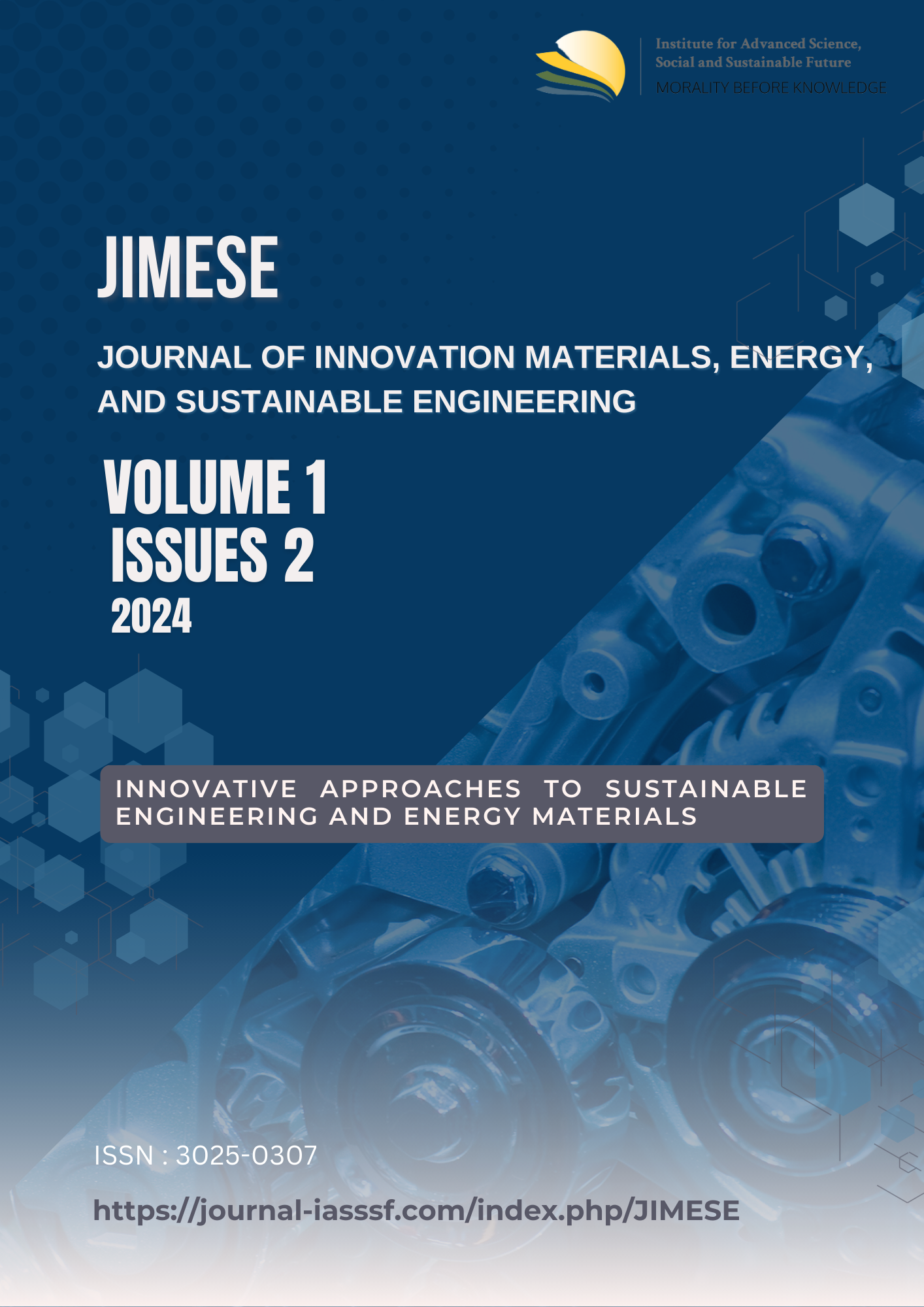Pengaruh karbon aktif sekam padi terhadap penyerapan Pb (timbal) dalam pelumas bekas kendaraan bermotor
DOI:
https://doi.org/10.61511/jimese.v1i2.2024.555Keywords:
activated carbon, adsorbents, rice husks, used lubricantsAbstract
The number of motorised vehicles, according to the Central Statistics Agency, reached 94,373,324 in 2012, and there was an increase in 2013 to 104,118,986. This is influenced by increasingly rapid population growth and the increasing need for transportation. Used lubricating oil is categorised as B3 waste, which can be seen from its characteristics and its constituent components. Rice husks resulting from milling that are not utilised optimally are usually only used as ash, or the use of rice husks has so far been limited to just being thrown away. Research was carried out regarding the activated carbon test from rice husk waste to adsorb Pb in used lubricating oil using a sulfuric acid activator and determine the effectiveness of reducing Pb (lead). The mass ratio of rice husks before and after calcination is 1:2, where the initial weight of the husks before calcination is 250 grammes to 125 grammes after undergoing calcination. A mass of 10 grammes of adsorbent that has been activated using sulfuric acid and a stirring time of 60 minutes can reduce the lead content of the used lubricant from 49,569 ppm to 39,241 ppm.
References
Abdel-Jabbar, N. M., Al Zubaidy, E. A., & Mehrvar, M. (2010). Waste lubricating oil treatment by adsorption process using different adsorbents. International Journal of Chemical and Molecular Engineering, 4(2), 141-144. https://www.idc-online.com/technical_references/pdfs/chemical_engineering/Waste%20Lubricating.pdf
Bartz, W. J. (1998). Lubricants and the environment. Tribology international, 31(1-3), 35-47. https://doi.org/10.1016/S0301-679X(98)00006-1
DIO, P. R. (2012). DAUR ULANG MINYAK PELUMAS BEKAS MENJADI MINYAK PELUMAS DASAR (Doctoral dissertation, Universitas Pembangunan Nasional" Veteran" Jawa Timur).
Handariansyah., & Sari, I. H. (2015). Pemanfaatan Kembali Minyak Pelumas Bekas Dengan Metode Oil Flushing Menggunakan PVS 2700 Sebagai Langkah Pelaksanaan 3R Limbah B3 Di Unit Pembangkit Semarang. Prosiding seminar nasional innovation in environmrntal management. https://adoc.pub/kata-kunci-kontaminan-limbah-b3-minyak-pelumas-bekas-oil-flu.html
Harsono, H. (2002). Pembuatan silika amorf dari limbah sekam padi. Jurnal Ilmu Dasar, 3(2), 98-103. http://www.unej.ac.id/fakultas/mipa/vol3,no2/harsono.pdf
Herawati, D. (1998). Uji kemempuan karbon aktif ampas tebu dengan activator K2S terhadap fenol. Tugas Akhir Jurusan Teknik Lingkungan FTSP-ITS. Surabaya.
Moura, L. G. M., Assunção Filho, J. L., & Ramos, A. C. S. (2010). Recovery of used lubricant oils through adsorption of residues on solid surfaces. Brazilian Journal of Petroleum and Gas, 4(3). http://dx.doi.org/10.5419/bjpg2010-0010
P3KNLH (Pusatpendidikan dan Pelatihan Kementrian Negara Lingkungan Hidup). Modul Diklat Pengelolaan Limbah B3, Dampak Umum Limbah Bahan Berbahaya dan Beracun Terhadap Lingkungan dan Kesehatan Manusia. Jakarta: Kementrian Lingkungan Hidup. http://perpustakaan.menlhk.go.id/pustaka/home/index.php?page=ebook&code=plh&pages=185
Pratiwi, Y. (2013). Pengolahan minyak pelumas bekas menggunakan metode acid clay treatment. Jurnal Teknik Sipil, 13(1). https://dx.doi.org/10.26418/jtst.v13i1.1157
Suarya, P. (2012). Karakterisasi adsorben komposit aluminium oksida pada lempung teraktivasi asam. Jurnal Kimia, 6(1), 93-100. https://ojs.unud.ac.id/index.php/jchem/article/download/2871/2046
Suprihatin, S., & Indrasti, N. S. PENYISIHAN LOGAM BERAT DARI LIMBAH CAIR LABORATORIUM DENGAN METODE PRESIPITASI DAN ADSORPS. Makara Journal of Science, 14(1), 10. https://scholarhub.ui.ac.id/cgi/viewcontent.cgi?article=1636&context=science
TOPALLAR, H., & BAYRAK, Y. (1999). Investigation of adsorption isotherms of myristic, palmitic and stearic acids on rice hull ash. Turkish Journal of Chemistry, 23(2), 193-198. https://journals.tubitak.gov.tr/cgi/viewcontent.cgi?article=3097&context=chem
Downloads
Published
How to Cite
Issue
Section
Citation Check
License
Copyright (c) 2024 Journal of Innovation Materials, Energy, and Sustainable Engineering

This work is licensed under a Creative Commons Attribution 4.0 International License.
















